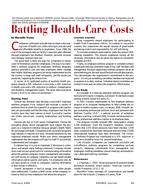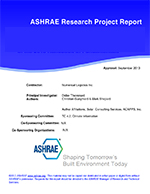Presents a numerical simulation study of a floor heating system with two different amounts of thermal mass, a medium amount (approximately 5 cm [1.9 in.] thick concrete) and a high amount (10 cm [3.9 in.] thick), under sunny and cloudy cold winter conditions. Three different thermostat setpoint profiles were considered with proportional control of the room operative temperature – constant setpoint, square wave, and half sinusoid. Analysis of the simulation results led the following conclusions. Thermal mass in a floor heating system may be effectively employed both for storage of auxiliary supplied heat and as a means of ensuring a floor surface temperature within comfort limits (less than 29degC [84.2degF]), as well as for storage of direct passive solar gains incident on it. To achieve efficient storage of passive solar gains in the thermal mass of a floor heating system while maintaining good thermal comfort, a lower setpoint is required at night, as is a smooth change to a higher setpoint during the daytime, such as the half-sinusoidal shape presented. Floor thermal mass that is thicker than necessary (5 cm [1.9 in.] of concrete) may contribute to large room temperature swings when high solar gains are present.
KEYWORDS: year 1997, Thermostats, floor heating, temperature swing, solar heat gain, heavy, thermal comfort, experiment, calculating, room temperature, lightweight
Citation: Symposium, ASHRAE Trans. 1997, vol.103, part 1
Product Details
- Published:
- 1997
- File Size:
- 1 file , 750 KB
- Product Code(s):
- D-16493


